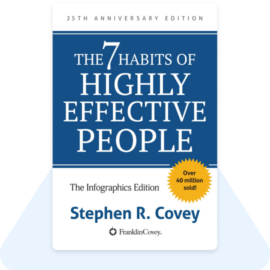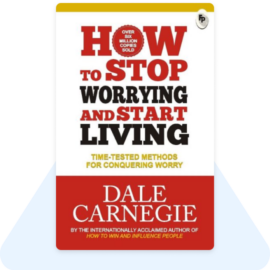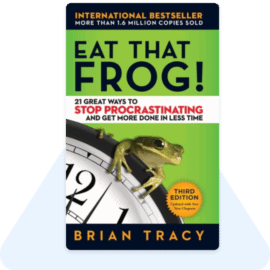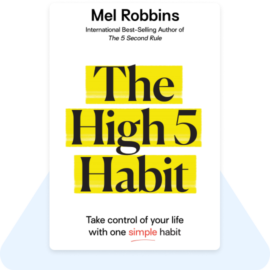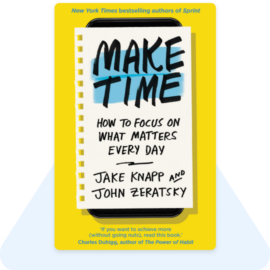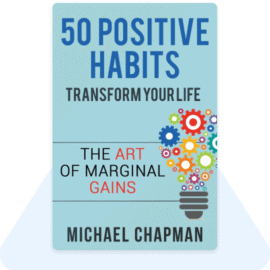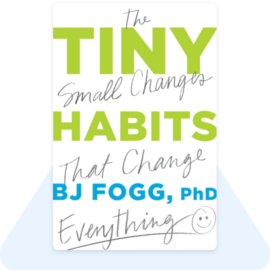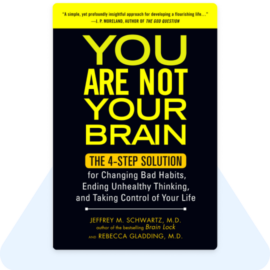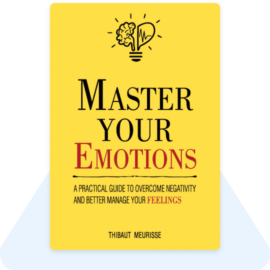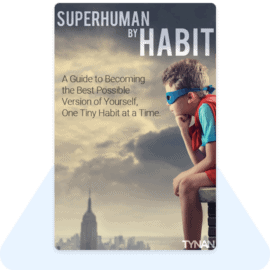“The 7 Habits of Highly Effective People” by Stephen R. Covey is a renowned self-improvement book that delves into the author’s core belief that our perception shapes our reality. Covey emphasizes that change begins by transforming ourselves and our perceptions to influence desired outcomes.
Introduction
The book serves as a valuable guide for those aspiring to succeed, offering insights into the habits that can significantly impact our journey toward achievement.
By recognizing the power of our perceptions, Covey encourages readers to adopt a proactive mindset and take responsibility for their personal growth and effectiveness. We can pave the way for transformative experiences and success through intentional changes in our habits.
Ultimately, “The 7 Habits of Highly Effective People” is a roadmap for individuals seeking to unlock their full potential and attain their goals. By embracing the principles outlined in the book, readers can cultivate the necessary skills and mindset to navigate challenges, foster personal growth, and achieve long-lasting success.
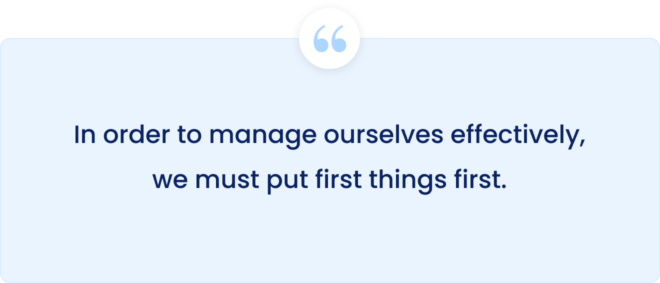
7 Habits of Highly Effective People :
- Be Proactive
- Begin with the End in Mind
- Put First Things First
- Think Win-Win
- Seek First to Understand, Then to Be Understood
- Synergize
- Sharpen the Saw
Highly influential individuals possess certain habits that contribute to their success. However, in his book, the author emphasizes that even those who have achieved outward success often face inner struggles and a desire for personal growth and meaningful relationships.
According to Covey, the root of the problem lies in how we perceive the situation. To bring about genuine change, we must undergo paradigm shifts that transform us fundamentally rather than merely altering our attitudes and behaviors superficially.
Covey presents the seven habits of highly effective people to address these needs. The first three habits revolve around self-mastery and the transition from dependence to independence. They lay the foundation for personal effectiveness and growth.
Habits four, five, and six focus on fostering teamwork, collaboration, and effective communication. They encourage individuals to move from independence to interdependence, emphasizing the value of working together and building mutually beneficial relationships.
The seventh habit encompasses continuous growth and improvement, serving as the embodiment of all the other patterns. It encourages individuals to consistently strive for personal and professional development, embracing a mindset of lifelong learning and progress.
By integrating these habits into their lives, highly effective individuals cultivate a strong foundation of self-mastery, teamwork, and personal growth. In addition, this holistic approach enables them to navigate challenges, foster meaningful relationships, and continuously improve themselves and their circumstances.
1. Be Proactive
The first habit discussed by Covey in his book is being proactive. This habit is rooted in our uniquely human capacity to examine our character, choose our perspectives, and take control of our effectiveness. In essence, proactivity is essential for achieving the actual point.
Reactive individuals adopt a passive approach, perceiving themselves as victims of circumstances. They often say, “There’s nothing I can do” or “That’s just how I am.” However, this reactive mindset is problematic because it perpetuates a cycle of victimization, leading to a sense of helplessness and lack of control.
In contrast, proactive individuals acknowledge their responsibility or “response-ability.” Covey defines response-ability as the ability to choose how we respond to any given situation or stimulus. To be proactive, we must shift our focus to the Circle of Influence within our Circle of Concern. This means directing our efforts toward things we can do something about.
Reactive individuals, conversely, concentrate on matters within their Circle of Concern that lie outside their Circle of Influence.
This tendency leads to a habit of blaming external factors, generating negative energy, and ultimately shrinking their Circle of Influence.
To put the principle of proactivity into practice, you can challenge yourself by taking the following steps:
Replace reactive language with proactive language. Instead of saying, “He makes me so mad,” adopt a proactive mindset by saying, “I control my feelings.” This shift empowers you to take ownership of your emotions and responses.
By cultivating a proactive approach, you can transform your mindset and take control of your actions and outcomes. Embracing proactivity allows you to break free from the cycle of reactivity, enabling personal growth and effectiveness.
Convert reactive tasks into proactive ones.
2. Begin With The End In Mind
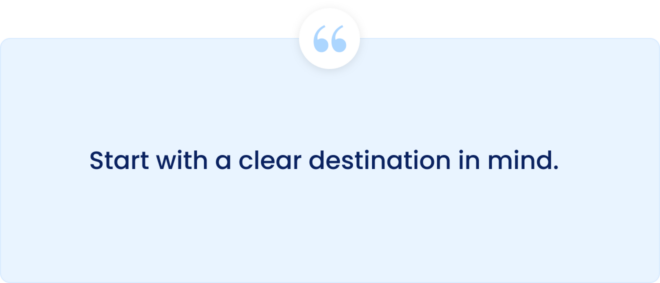
A crucial aspect discussed by Covey is the importance of starting with a clear destination in mind. He emphasizes the power of imagination in shaping our vision of what we aspire to become.
Often, we easily fill our lives with busyness. We tirelessly strive for victories, promotions, increased income, and recognition.
However, amidst this constant activity, we rarely pause to reflect on the deeper meaning behind our pursuits.
As a result, we must question whether the things we passionately focus on align with what truly matters to us.
Habit 2 advises us to approach everything we do by beginning with the end in mind. This entails having a distinct destination and purpose. By doing so, we ensure that the steps we take align with our desired outcomes.
This principle holds significant relevance not only for individuals but also for businesses. While managerial roles often revolve around optimizing efficiency, authentic leadership involves setting the right strategic vision for the organization from the outset.
Leaders ask themselves, “What are we trying to accomplish?” They understand the necessity of starting with a clear destination to guide their actions and decisions.
Individuals and organizations can align their efforts and resources toward meaningful goals by starting with a clear destination.
In addition, this proactive approach allows for greater focus and purpose, ensuring that the actions taken are purposeful and directed toward the desired outcomes.
Whether in personal or professional realms, having a clear vision of the destination empowers individuals and leaders to make intentional choices and navigate their paths with clarity and determination.
Before we as individuals or organizations can start setting and achieving goals, we must be able to identify our values. This process may involve some rescripting to be able to assert our values.
Rescripting, Covey explains, is recognizing ineffective scripts written for you and changing those scripts by proactively writing new ones built on your values.
It is also essential to identify our center. Whatever is at the center of our life will be the source of our security, guidance, wisdom, and power.
Our centers affect us fundamentally. They determine our daily decisions, actions, and motivations, as well as our interpretation of events.
Challenge yourself to test the principle of beginning with the end in mind by doing the following:
- Visualize in rich detail your funeral. Who is there? What are they saying? How have you lived your life? The relationships? What do you want them to say? Think about how your priorities would change if you only had 30 more days to live. Start living by these priorities.
- Break down different roles in your life, whether professional, personal, or community, and list three to five goals you want to achieve for each.
- Define what scares you. Public speaking? Critical feedback after writing a book? Write down the worst-case scenario for your biggest fear, then visualize how you’ll handle this situation. Finally, write down exactly how you’ll take it.
3. Put First Things First
To effectively manage ourselves, prioritization becomes crucial. Putting first things first requires the discipline to organize our daily actions based on importance rather than urgency.
In Habit 2, we explored the significance of identifying our values and clarifying our objectives. However, Habit 3 delves into implementing these goals, emphasizing the need to execute our priorities consistently in our day-to-day lives.
Maintaining discipline and focus to stay on the path toward our aspirations necessitates the willpower to act when we may not feel inclined to do so.
In addition, it requires aligning our actions with our values rather than being driven solely by momentary desires or impulses.
To categorize our activities effectively, we can consider urgency and importance. But first, let’s refer to the time management matrix for a better understanding:
Often, we find ourselves reacting to urgent matters, investing our time in tasks that may not hold significant importance. Unfortunately, this tendency leads us to neglect Quadrant II, which is actually the most critical Quadrant of all.
By consciously prioritizing Quadrant II activities, which are both important and non-urgent, we can genuinely focus on activities that align with our values and long-term goals.
This proactive approach allows us to minimize the distractions of urgent but unimportant tasks and invest our energy in activities that profoundly impact our personal and professional lives.
By adhering to the principle of putting first things first, we can optimize our time and efforts, nurturing our ability to achieve what truly matters to us. It involves making intentional choices, valuing long-term objectives over short-term demands, and embracing a proactive mindset to pursue personal effectiveness.
If we focus on Quadrant l and spend our time managing crises and problems, it keeps getting bigger and bigger until it consumes us. This leads to stress, burnout, and constantly putting out fires.
If we focus on Quadrant all, we spend most of our time reacting to urgent matters when the reality is their perceived urgency is based on the priorities and expectations of others. This leads to short-term focus, feeling out of control, and shallow or broken relationships.
If we focus on Quadrant lV, we are leading an irresponsible life. This often leads to getting fired and being highly dependent on others.
Quadrant ll – It deals with things like building relationships, long-term planning, exercising, and preparation, all items we know we need to do but somehow only sometimes get around to doing because they don’t feel urgent.
To focus our time in Quadrant II, we must learn to say “no” to other activities, sometimes ones that seem urgent. We also need to be able to delegate effectively.
Plus, when we focus on Quadrant II, it means we’re thinking ahead, working on the roots, and preventing crises from happening in the first place! This helps us implement the Pareto Principle – 80% of your results come from 20% of your time.
Here are some ways you can practice putting first things first:
- Identify a Quadrant II activity you need to pay attention to. Please write it down and commit to implementing it.
- Create your time management matrix to start prioritizing.
- Estimate how much time you spend in each Quadrant. Then log your time over three days. How accurate was your estimate? How much time did you spend in Quadrant II (the most critical Quadrant)?
4. Think Win-Win
To establish effective interdependent relationships, we must commit to creating Win-Win situations that are mutually beneficial and satisfying to each party.
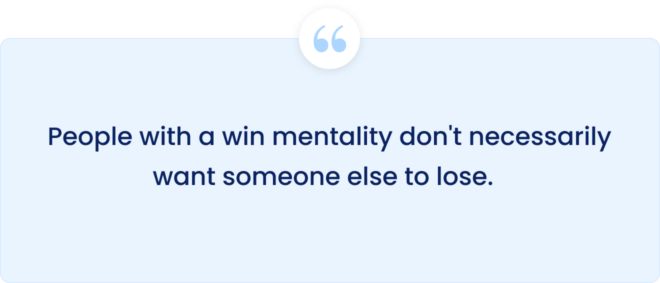
Covey explains that there are six paradigms of human interaction:
- Win-Win: Both people win. Agreements or solutions are mutually beneficial and satisfying to both parties.
- Win – Lose: “If I win, you lose.” Win-Lose people are prone to use position, power, credentials, and personality to get their way.
- Lose – Win: “I lose, you win.” Lose-Win people are quick to please, appease, and seek strength from popularity or acceptance.
- Lose-Lose: Both people lose. When two Win-Lose people get together, when two determined, stubborn, ego-invested individuals interact, the result will be a Lose-Lose.
- Win: People with a winning mentality don’t necessarily want someone else to lose. What matters is that they get what they want.
- Win-Win or No Deal: There is no deal if you can’t reach a mutually beneficial agreement.
Another critical factor in solving Win-Win situations is maintaining an Abundance Mentality or believing there’s plenty out there for everyone.
The Scarcity Mentality is a prevalent mindset where individuals perceive everything as a zero-sum game.
In this mindset, there is a belief that if someone else succeeds or receives recognition, it diminishes their opportunities.
Consequently, those with a Scarcity Mentality struggle to share credit, find it challenging to genuinely celebrate others’ achievements, and operate from a place of self-interest.
In interpersonal leadership, our character’s authenticity and proactivity level directly impact our effectiveness.
The more genuine and aligned with our values we are, the greater our proactivity becomes. Similarly, the deeper our commitment to achieving Win-Win outcomes, the more influential our leadership becomes.
To achieve Win-Win situations, it is crucial to focus on results rather than getting caught up in specific methods. We can foster collaboration and cooperation by prioritizing the desired outcomes and staying open to creative problem-solving.
Additionally, directing attention towards solving problems rather than assigning blame to individuals contributes to a more productive and harmonious environment.
By transcending the Scarcity Mentality and adopting a mindset rooted in abundance, we can cultivate a culture of collaboration, shared recognition, and genuine happiness for others’ successes.
This shift in perspective benefits individual relationships enhances overall team dynamics, and fosters collective growth and achievement.
5. Seek First To Understand, Then To Be Understood
Before offering advice, suggesting solutions, or effectively interacting with another person, we must seek to understand them and their perspective through empathic listening.
Let’s say you go to an optometrist and tell him that you’ve been having trouble seeing clearly, and he takes off his glasses, hands them to you, and says, “Here, try these. They’ve been working for me for years!”
You put them on, but they only make the problem worse. What are the chances you’d go back to that optometrist?
Unfortunately, we do the same thing in our everyday interactions with others. We prescribe a solution before we diagnose the problem.
Habit 5 emphasizes the importance of seeking to understand before seeking to be understood. Listening is Central to this habit, which enables empathic understanding.
Listening empathically requires a fundamental shift in our mindset. Typically, our instinct is to prioritize being understood rather than understanding others. We often approach conversations to reply rather than to comprehend genuinely.
Our focus is divided between speaking and preparing our response, leaving little room for proper understanding.
Covey highlights the significance of effective communication, with experts estimating that:
- 10% of our communication is conveyed through words.
- 30% is given through sounds.
- 60% is conveyed through body language.
The second part of Habit 5 is “Then to be understood.” This step is equally vital in achieving Win-Win solutions where all parties benefit from the outcome.
To cultivate the habit of seeking first to understand, consider implementing the following practices:
- Engage in active listening, which involves giving your full attention to the speaker and seeking to comprehend their perspective before formulating your response.
- Practice empathy by putting yourself in the other person’s shoes. Understanding their emotions, concerns, and motivations fosters a deeper connection and facilitates effective communication.
- Ask open-ended questions encouraging the speaker to elaborate and express their thoughts and feelings. This promotes a dialogue based on understanding rather than assumption.
- Developing the habit of seeking first to understand creates a foundation for meaningful and productive interactions. It allows for authentic connections, improved collaboration, and the discovery of Win-Win solutions that benefit all parties involved. In addition, we can enhance our communication skills and foster harmonious relationships by actively listening and empathizing.
- Cover your ears and eye the next time you watch two people communicate. What emotions are being expressed that might not come across through words alone? For example, was one person or the other more interested in the conversation? Write down what you noticed.
6. Synergize
Understanding and appreciating the unique perspectives of others provides us with the opportunity to cultivate synergy, a powerful concept that fuels the discovery of new possibilities through openness and creativity.
Synergy enables us to tap into the collective potential of a group, allowing us to transcend the limitations of individual thinking. It involves embracing the notion that combining diverse viewpoints can create something more significant than the sum of its parts.
Synergy encourages us to let go of outdated scripts and embrace the process of collectively writing new narratives.
By fostering synergy within a team or community, we unlock the ability to generate innovative alternatives and explore uncharted territories.
This collaborative approach sparks fresh ideas, encourages cooperation, and nurtures an environment where individuals can contribute their unique strengths and perspectives.
The essence of synergy lies in recognizing that leveraging our differences can achieve outcomes surpassing what any person or viewpoint could accomplish alone. We unlock the potential for collaborative problem-solving, creative solutions, and transformative growth through synergy.
By embracing synergy and its principles, we can harness a group’s collective intelligence and creativity, paving the way for the emergence of novel ideas, breakthrough innovations, and harmonious relationships. Through synergy, we can chart new paths, dissolve barriers, and create a future filled with endless possibilities.
So how can we introduce synergy to a given situation or environment? Start with habits 4 and 5; you must think Win-Win and seek first to understand.
Once you have these in mind, you can pool your desires with those of the other person or group. And then you’re not on opposite sides of the problem; you’re together on one side, looking at the situation, understanding all the needs, and working to create a third alternative to meet them.
What we end up with is not a transaction but a transformation. Both sides get what they want, and they build their relationship in the process. The real essence of synergy is valuing the differences between mental, emotional, and psychological differences between people.
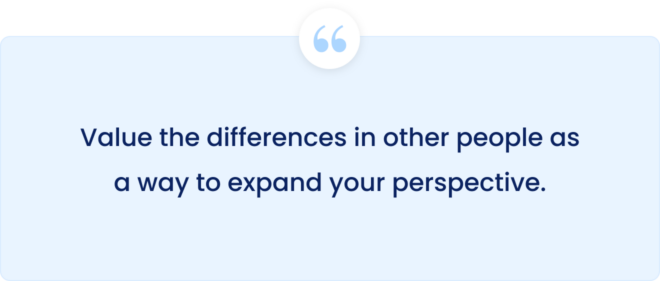
Synergy allows you to:
- Value the differences in other people as a way to expand your perspective
- Exercise courage in interdependent situations to be open and encourage others to be open
- Take a moment to reflect and list individuals who tend to irritate you. Once you have your list, select one person from it.
Consider how this person’s views and perspectives differ from your own. Now, challenge yourself to step into their shoes and imagine what it feels like to be them. Engage in a cognitive empathy exercise to understand their experiences and emotions. Doing so may gain valuable insights and develop a deeper understanding of their point of view.
This exercise aims to enhance your ability to comprehend and empathize with others, particularly during disagreements.
The next time you disagree with the selected individual, make a conscious effort to understand their concerns and the reasons behind their differing opinions.
By striving to understand them more profound, you create an opportunity for meaningful dialogue and finding common ground.
The more you genuinely understand the other person’s perspective, the easier it becomes to engage in productive discussions that can lead to either changing their mind or altering your views.
By seeking to understand before seeking to be understood, you open doors for effective communication, bridge gaps, and build stronger connections.
Remember, the key lies in active listening and empathetic understanding. By immersing yourself in the experience of being in their shoes, you can gain valuable insights, challenge your assumptions, and pave the way for meaningful conversations that promote mutual growth and understanding.
7. Sharpen The Saw
To be highly effective, it is essential to allocate time to renew our physical, spiritual, mental, and social well-being. Continuous renewal enables us to synergistically enhance our ability to practice each habit and ultimately maximize our potential.
Habit 7, “Sharpen the Saw,” revolves around renewal and is the foundation for all other habits. By prioritizing self-renewal, we preserve and enhance our greatest asset – ourselves.
There are four dimensions of our nature, and each must be nurtured regularly and in balanced ways:
Physical Dimension: Continuous physical improvement enhances our capacity to work, adapt, and enjoy life. To renew ourselves physically, we should focus on the following:
- Maintaining a nutritious diet
- Getting sufficient relaxation
- Engaging in regular exercise to improve endurance, flexibility, and strength
- Spiritual Dimension: Renewing our spiritual self provides guidance and reinforces our commitment to our values. To renew ourselves spiritually, we can:
- Practice daily meditation
- Connect with nature
- Immerse ourselves in inspiring literature or music.
- Mental Dimension: Renewing our mental health involves expanding our minds and knowledge. To renew ourselves mentally, we can:
- Read enriching literature
- Keep a journal to reflect on thoughts, experiences, and insights.
- Limit television consumption to programs that contribute to personal growth.
- Social/Emotional Dimension: Renewing ourselves socially revolves around developing meaningful relationships. To renew ourselves emotionally, we can:
- Seek a deep understanding of others.
- Contribute to projects that improve the lives of others.
- Embrace an Abundance Mentality and support others in achieving success.
As we prioritize renewal across these four dimensions, we must strive to impact others positively. For example, we can inspire others to follow a higher path by demonstrating our belief in them, listening with empathy, and encouraging proactive behavior.
Renewal is a transformative process that empowers us to embark on an upward spiral of growth, change, and continuous improvement. By dedicating ourselves to regular self-renewal, we cultivate the energy, vitality, and mindset needed to thrive in all aspects of life.
List activities to help you renew yourself along the four dimensions. Select one exercise for each size and list it as a goal for the coming week. At the end of the week, assess your performance. What led you to fail or succeed in accomplishing each goal?
The 7 Habits of Highly Effective People Book Review
“The 7 Habits of Highly Effective People” by Stephen R. Covey is a transformative self-help book that provides timeless principles for personal and professional success.
Covey’s approach emphasizes the importance of proactive behavior, setting goals, prioritizing tasks, and fostering meaningful relationships. The book encourages readers to cultivate a proactive mindset and take responsibility for their lives.
Covey’s seven habits, such as “Be Proactive,” “Begin with the End in Mind,” and “Seek First to Understand, Then to Be Understood,” offer practical insights and strategies for personal growth and effectiveness.
This influential guide serves as a powerful resource for individuals seeking to enhance their productivity and achieve lasting success.
Thank You.
Contents

